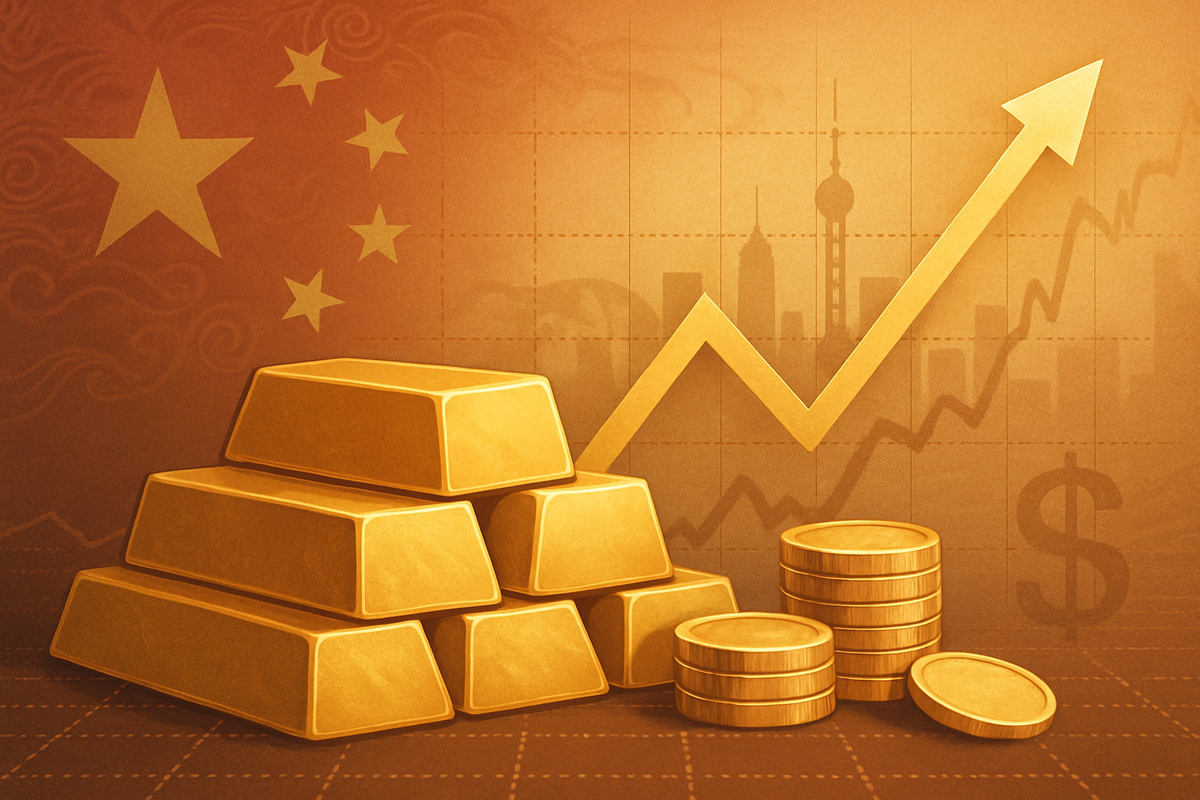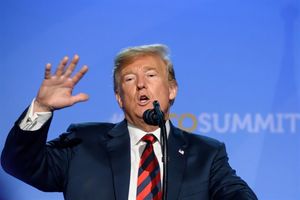
Beijing, China – October 7, 2025 – The People's Bank of China (PBOC), China's central bank, has once again sent ripples through the global financial landscape, announcing its eleventh consecutive month of gold accumulation. This sustained buying spree, with the latest purchases reported for September 2025, underscores a deliberate and strategic shift in the nation's reserve management, driving global gold prices to unprecedented highs and signaling a profound reorientation of international market dynamics.
This consistent demand from one of the world's largest economies has established a significant "demand floor" for the precious metal, pushing New York gold futures past the $4,000 per ounce mark for the first time in history, with spot gold trading near $3,976.94. The implications are immediate and far-reaching, as analysts now anticipate continued bullish momentum for gold, fueled by a combination of central bank diversification, escalating geopolitical uncertainties, and a broader global trend towards de-dollarization.
A Deep Dive into China's Gold Strategy
The PBOC's relentless acquisition of gold began its current streak in November 2024, and the latest figures, released around October 6th or 7th, 2025, confirm that China's gold holdings increased to 74.06 million fine troy ounces in September, up from 74.02 million ounces in August. This incremental yet consistent accumulation has seen the value of these reserves climb significantly, now standing at an impressive $283.29 billion. Over the course of this eleven-month period, the PBOC has added a substantial 39.2 tonnes of gold to its reserves, a clear indicator of a long-term strategic pivot.
This aggressive gold buying is not an isolated event but rather a calculated move by the PBOC to diversify its foreign exchange reserves away from traditional assets, particularly U.S. Treasury bonds. The primary objective is to reduce reliance on the U.S. dollar, hedging against potential devaluation and mitigating risks associated with the perceived "weaponization" of the dollar in international finance. This strategy aligns with broader geopolitical shifts and China's aspirations for greater financial sovereignty.
Initial market reactions have been overwhelmingly bullish for gold. The sustained central bank demand is seen as a powerful catalyst, reinforcing gold's status as a safe-haven asset and a hedge against inflation and economic instability. Major financial institutions, including Goldman Sachs (NYSE: GS), have responded by revising their gold price forecasts upwards, with some now predicting gold could reach $4,900 per ounce by December 2026, driven by persistent central bank buying and robust Western ETF inflows. This sentiment has been amplified by global geopolitical tensions, expectations of interest rate cuts, and a weakening U.S. dollar, all contributing to gold's over 50% year-to-date gain in 2025.
Market Winners and Losers in the Golden Rush
China's sustained gold accumulation is creating clear winners and losers across various sectors of the financial market. At the forefront of the beneficiaries are gold mining companies. Companies like Barrick Gold Corporation (NYSE: GOLD), Newmont Corporation (NYSE: NEM), and AngloGold Ashanti Limited (NYSE: AU) are experiencing significant tailwinds. Higher gold prices directly translate into increased revenues and profitability, enhancing their exploration budgets, expanding existing operations, and potentially leading to higher dividends for shareholders. Junior mining companies with promising gold prospects are also likely to attract more investment as the allure of gold strengthens.
Gold-backed Exchange Traded Funds (ETFs) and other gold investment vehicles are also poised for substantial gains. Funds such as SPDR Gold Shares (NYSE Arca: GLD) and iShares Gold Trust (NYSE Arca: IAU) are seeing increased inflows as both institutional and retail investors seek to capitalize on the rising price of gold and the perceived stability offered by central bank demand. Asset management firms specializing in precious metals are likely to see their assets under management grow, benefiting from increased investor interest.
Conversely, the ongoing shift away from the U.S. dollar as a primary reserve asset could present challenges for financial institutions heavily invested in U.S. Treasury securities or those whose business models are deeply intertwined with dollar dominance. While not an immediate collapse, a gradual diversification by central banks globally could reduce demand for U.S. debt, potentially impacting bond yields and the overall cost of borrowing for the U.S. government. Furthermore, companies heavily reliant on a strong U.S. dollar for their international transactions or those with significant dollar-denominated debt might face headwinds if the dollar continues to weaken against other major currencies or gold. While the immediate impact on specific non-gold-related companies might be subtle, the broader trend of de-dollarization could introduce new layers of currency risk and require strategic adjustments for multinational corporations.
Broader Implications and Historical Parallels
China's consistent gold accumulation is more than just a balance sheet adjustment; it's a critical component of a broader, epoch-making shift in global financial architecture. This event fits squarely into the burgeoning trend of de-dollarization, where nations, particularly emerging economies, are actively seeking to reduce their reliance on the U.S. dollar as the world's primary reserve currency. The PBOC's actions are mirrored by other central banks, including those in India, Turkey, and various Middle Eastern nations, which have collectively purchased over 1,000 tonnes of gold annually over the past three years – a pace that has doubled since 2022. This collective movement signals a growing desire for financial autonomy and a hedge against the perceived risks of a unipolar reserve system.
The ripple effects of this trend are substantial. For competitors and partners, it implies a gradual rebalancing of power in international finance. The increased demand for gold could lead to further price appreciation, making it a more expensive asset for other central banks to acquire. This could also accelerate the development of alternative payment systems and currency blocs, potentially challenging the long-standing dominance of SWIFT and other dollar-centric financial infrastructures. Regulatory and policy implications are also significant, as governments may consider new frameworks for managing reserves, engaging in commodity-backed trade agreements, or even exploring digital currencies backed by precious metals.
Historically, periods of significant geopolitical tension and economic uncertainty have often seen a flight to gold. The current environment, marked by ongoing conflicts, trade disputes, and concerns over global inflation, echoes past eras where gold served as a fundamental store of value. Comparisons can be drawn to the post-Bretton Woods era, when the U.S. dollar's convertibility to gold ended, leading to shifts in global reserve management. More recently, the financial crisis of 2008 and the subsequent quantitative easing policies also spurred renewed interest in gold. China's current strategy, however, is unique in its scale and sustained nature, suggesting a more fundamental and long-term re-evaluation of reserve assets rather than a short-term hedge. For the first time since 1996, central bank gold reserves have surpassed holdings of U.S. Treasury securities, underscoring the magnitude of this paradigm shift.
The Road Ahead: Navigating a Gold-Centric Future
Looking ahead, the sustained gold accumulation by China's central bank portends several significant short-term and long-term possibilities for global markets. In the short term, continued central bank buying, coupled with robust investor demand, is likely to keep gold prices elevated, potentially testing new resistance levels. The "depreciation trade" momentum, driven by concerns over U.S. fiscal trajectory and national debt, is expected to persist, further supporting gold's appeal as a hedge against dollar devaluation. This could lead to increased volatility in currency markets as the dollar's relative strength is re-evaluated.
In the long term, this trend could accelerate the diversification of global reserve assets, leading to a more multipolar financial system. Central banks globally may continue to pivot away from traditional fiat currencies, especially the U.S. dollar, towards tangible assets like gold. This could necessitate strategic pivots for international financial institutions and corporations, requiring them to adapt to a landscape where currency risks are more diversified and where gold plays a more prominent role in international trade and finance. Market opportunities may emerge in gold-related investments, commodity trading, and financial instruments designed to hedge against currency fluctuations. Conversely, challenges could arise for economies heavily reliant on dollar-denominated trade or those with large dollar reserves.
Potential scenarios include a gradual and orderly transition towards a more diversified reserve system, or, in more extreme cases, an accelerated shift if geopolitical tensions or economic crises escalate. Another scenario could see other major economies following China's lead, further amplifying the demand for gold and potentially leading to a re-evaluation of monetary policy frameworks globally. Investors should prepare for a period of ongoing structural change, where the role of gold as a foundational asset is increasingly recognized.
A Golden Epoch: Summarizing the Shift
China's eleventh consecutive month of gold accumulation by the People's Bank of China marks a pivotal moment in global finance, underscoring a strategic, long-term commitment to diversifying its national reserves and reducing its reliance on the U.S. dollar. The immediate key takeaway is the unprecedented surge in global gold prices, now exceeding $4,000 per ounce, driven significantly by this consistent central bank demand. This trend provides a strong demand floor for gold, bolstering its status as a premier safe-haven asset amidst a backdrop of escalating geopolitical uncertainties and concerns over currency stability.
Moving forward, the market is poised for continued bullish sentiment towards gold. This sustained central bank activity, coupled with a broader global de-dollarization trend, suggests a lasting impact on the composition of global reserves and international financial flows. Investors should assess their portfolios for exposure to gold and related assets, considering the potential for further price appreciation and the increasing importance of gold as a hedge against economic and geopolitical risks. The shift also highlights the need for companies to evaluate their currency exposures and strategic positioning in a potentially more multipolar financial world.
In the coming months, investors should closely watch for continued updates on central bank gold purchases globally, any shifts in U.S. monetary policy, and further developments in geopolitical tensions. These factors will be crucial in shaping the trajectory of gold prices and the broader evolution of the international financial system. China's golden streak is not merely an economic footnote; it's a powerful signal of a new epoch in global finance, where the allure of tangible assets like gold is once again taking center stage.
This content is intended for informational purposes only and is not financial advice.






